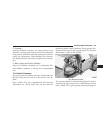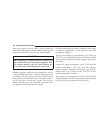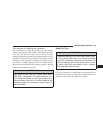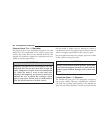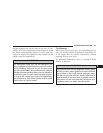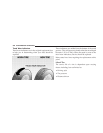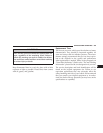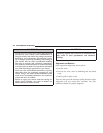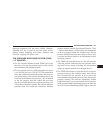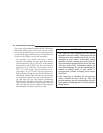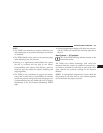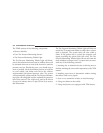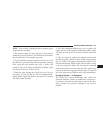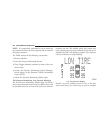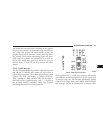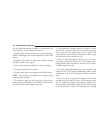
Improper alignment will not cause vehicle vibration.
Vibration may be a result of tire and wheel out-of-
balance. Proper balancing will reduce vibration and
avoid tire cupping and spotty wear.
TIRE PRESSURE MONITORING SYSTEM (TPMS)
— IF EQUIPPED
•
The Tire Pressure Monitor System (TPMS) will warn
the driver of a low tire pressure based on the vehicle
recommended cold placard pressure.
•
The tire pressure will vary with temperature by about
1 psi (6.9 kPa) for every 12°F (6.5°C). This means that
when the outside temperature decreases, the tire pres-
sure will decrease. Tire pressure should always be set
based on “cold inflation tire pressure”. This is defined
as the tire pressure after the vehicle has not been
driven for at least three hours, or driven less than 1 mi
(1 km) after a three hour period. The cold tire inflation
pressure must not exceed the maximum inflation
pressure molded into the tire sidewall. Refer to “Tires
– General Information” in this section for information
on how to properly inflate the vehicle’s tires. The tire
pressure will also increase as the vehicle is driven - this
is normal and there should be no adjustment for this
increased pressure.
•
The TPMS will warn the driver of a low tire pressure
if the tire pressure falls below the low-pressure warn-
ing limit for any reason, including low temperature
effects, or natural pressure loss through the tire.
•
The TPMS will continue to warn the driver of low tire
pressure as long as the condition exists, and will not
turn off until the tire pressure is at or above the
recommended cold placard pressure. Once the low tire
pressure warning (Tire Pressure Monitoring Telltale
Light) illuminates, you must increase the tire pressure
to the recommended cold placard pressure in order for
the Tire Pressure Monitoring Telltale Light to turn off.
STARTING AND OPERATING 271
5



